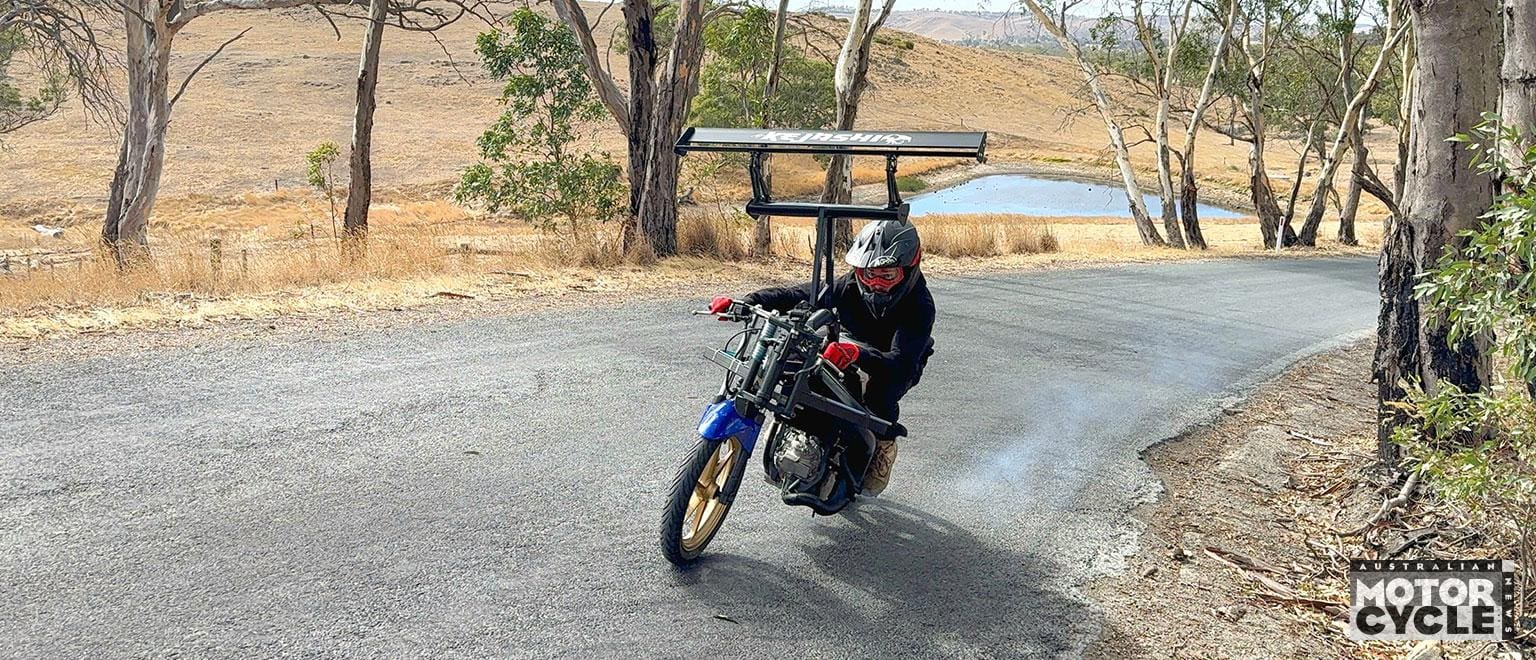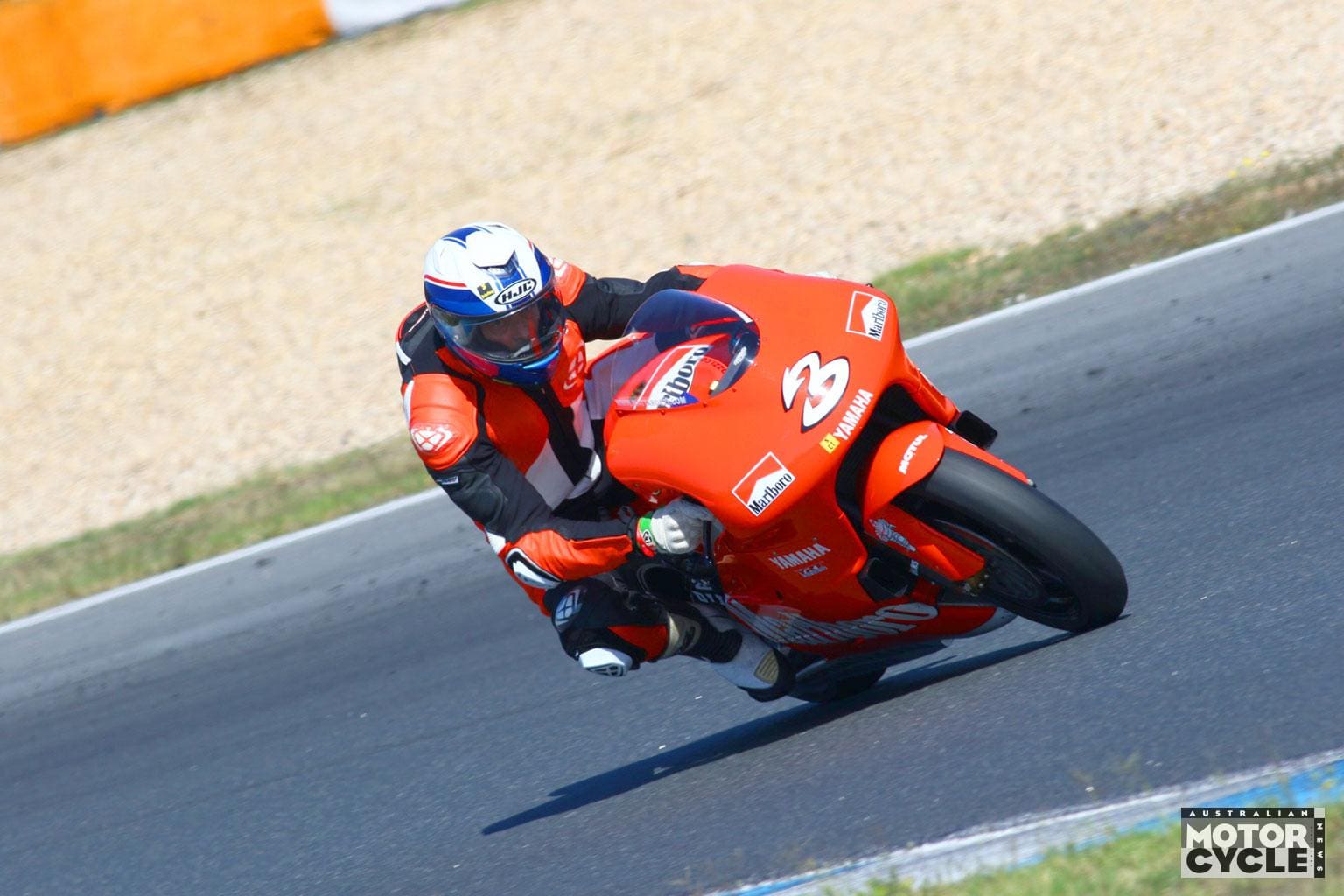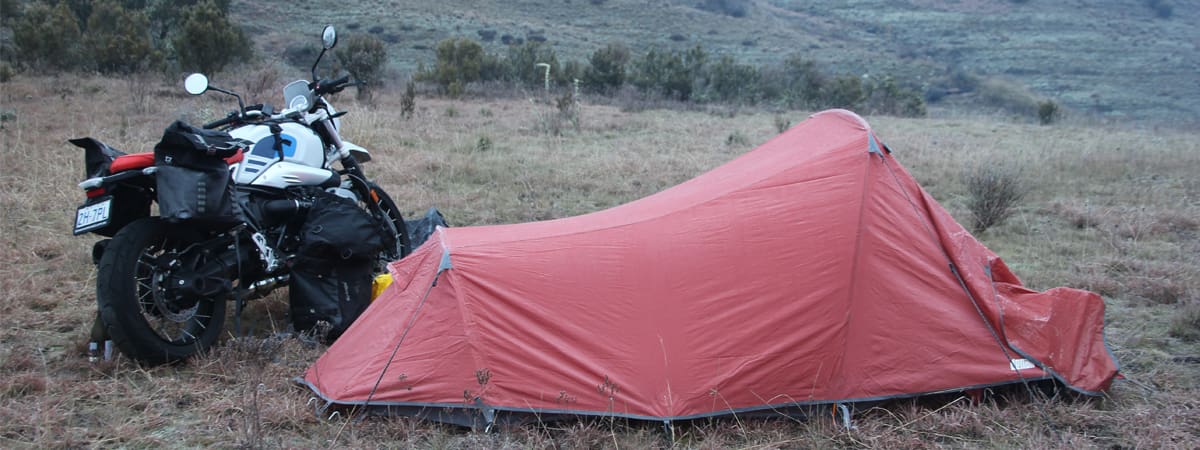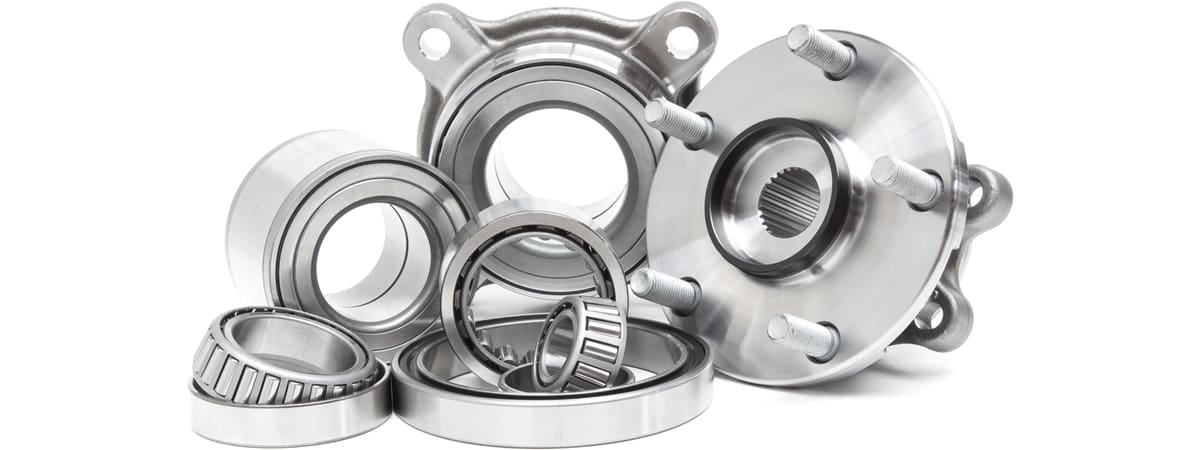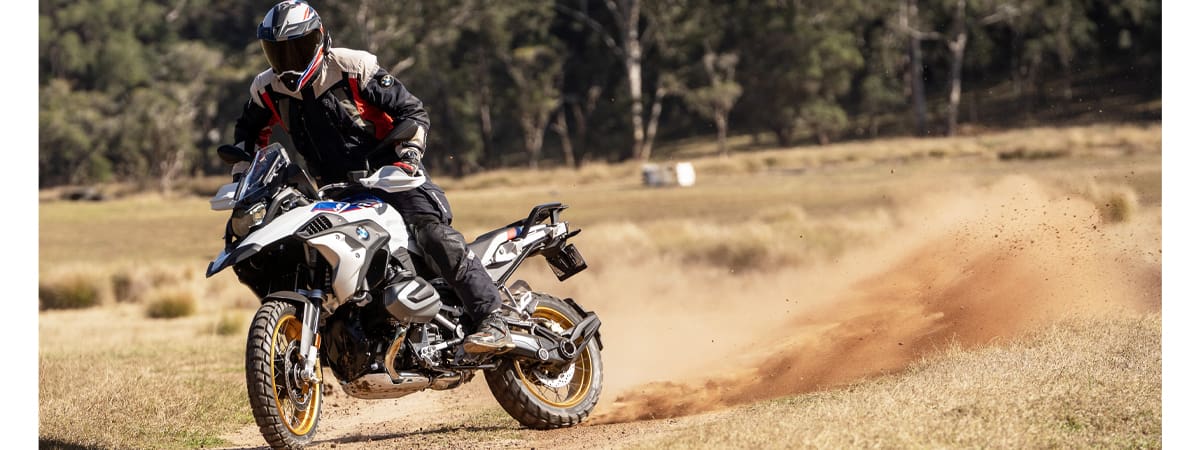There are two times you really want to know whether a bike’s frame is straight: when you’re buying, or after you have crashed. Sometimes the symptoms can be difficult to pick up, and finding out too late can be costly.
There are a few ways of testing your frame, and there are pros and cons to each.
An experienced eye will notice the telltale signs right away, so we have listed a few of those here. We’ve also drafted in AMCN’s workshop muse, my trusty 2011 Ducati Monster 1100, which came complete with enough visual clues to raise concerns about its geometry.
The first thing to do is carry out a detailed visual inspection, then measure the frame with string or a straight edge, and for the ultimate in piece of mind, use a Frame Align tool.
Only after doing all of this did the moment of truth arrive for the Monster.
So … did I buy a bent one?
1 Inspect the steering stops
Some bikes will have one stop located close to the headstock or, like the Monster here, have one on either side. Look for any cracks around the paint or signs that the stop isn’t sitting squarely – any sort of damage or cracking may indicate the bike has been for a trip down the road.

2 Handlebars and ’bar ends
Check that your handlebars are straight and true, and whether the ends have been ground down in a crash. This will be noticeable, especially on the throttle side, where you won’t need to remove the ’bar end to notice any damage.
When I purchased this Monster there were aftermarket levers fitted plus numerous carbon bits and pieces, all of which can be crash tip-offs.
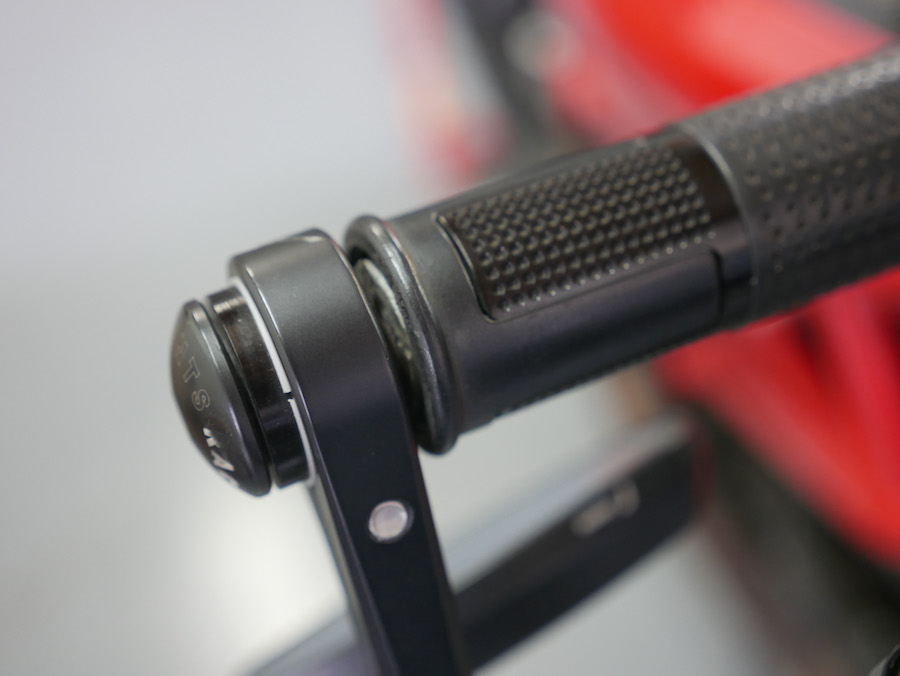
3 Inspect fork and rims
This is perhaps the most important thing to check. When a bike hits the ground, the fork is usually going to get knocked or scraped. Check whether paint has been resprayed or if the original items have been replaced. To continue checking the bike with a string line or straight edge, it is important to verify the forks and rims are straight and true.
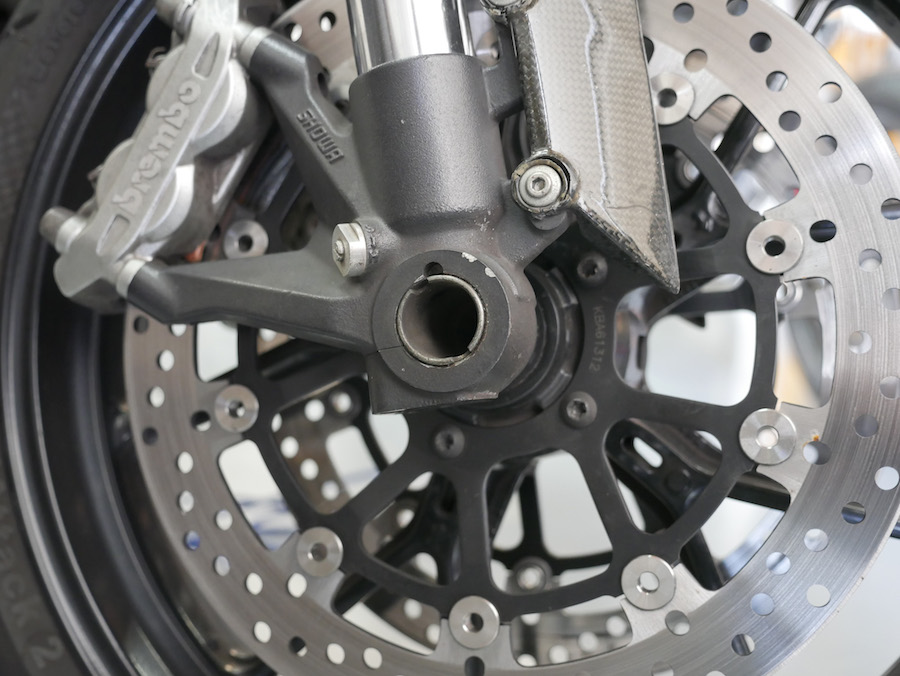
4 Other visual checks
It doesn’t stop there. Also take a look at the brake rotors, checking if they are warped or bent. Pillion ’pegs are another thing to inspect – check that they are at an even height and symmetrical. Also check the gear lever and brake lever. Scuffing on the gear lever is another telltale sign.
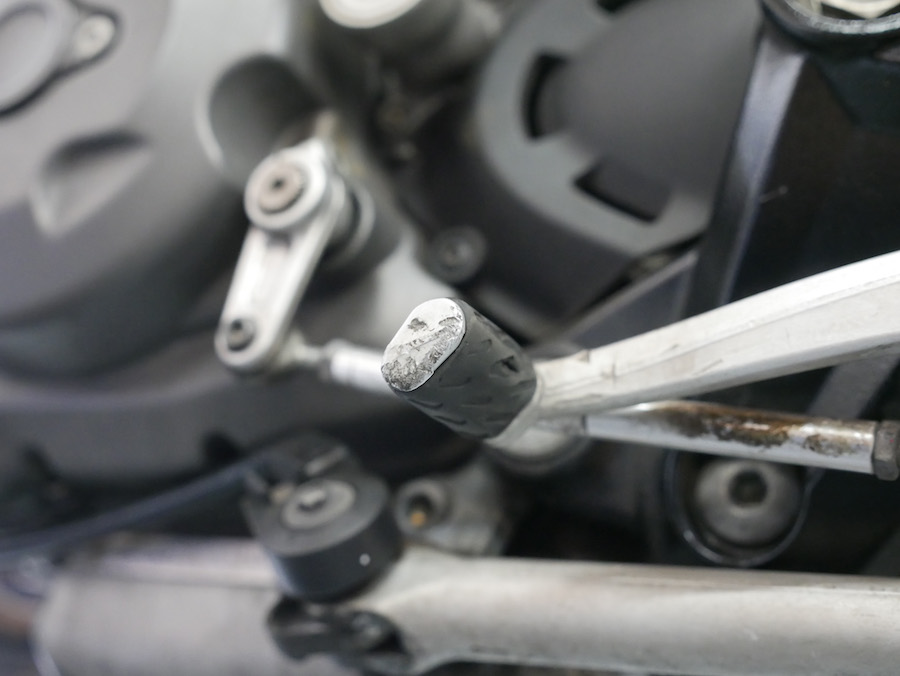
5 Set up a string line
One of the easiest ways to check for frame integrity is by running a string line from the rear wheel. Place your bike on a paddock stand or centrestand. With the bike in gear, wrap string around the rear tyre and tape it in place so it doesn’t move. You will need two heavy objects like gym weights or bricks to keep the string taut and secure at the front.

6 Set up a straight edge
Alternatively, you can use a builder’s straight edge to achieve the same result. The idea with both methods is to create parallel lines. Make sure the string or straight edge are not touching anything apart from rear tyre. There needs to be an unobstructed line from rear to front.

7 Measure distance to rim.
The measurement from the front rim to the straight edge should be the same on both sides if your frame is in alignment. Remember that this is only an accurate measurement when the rims and forks are straight and true. In this case, the Monster came up a few millimetres out – within tolerance.
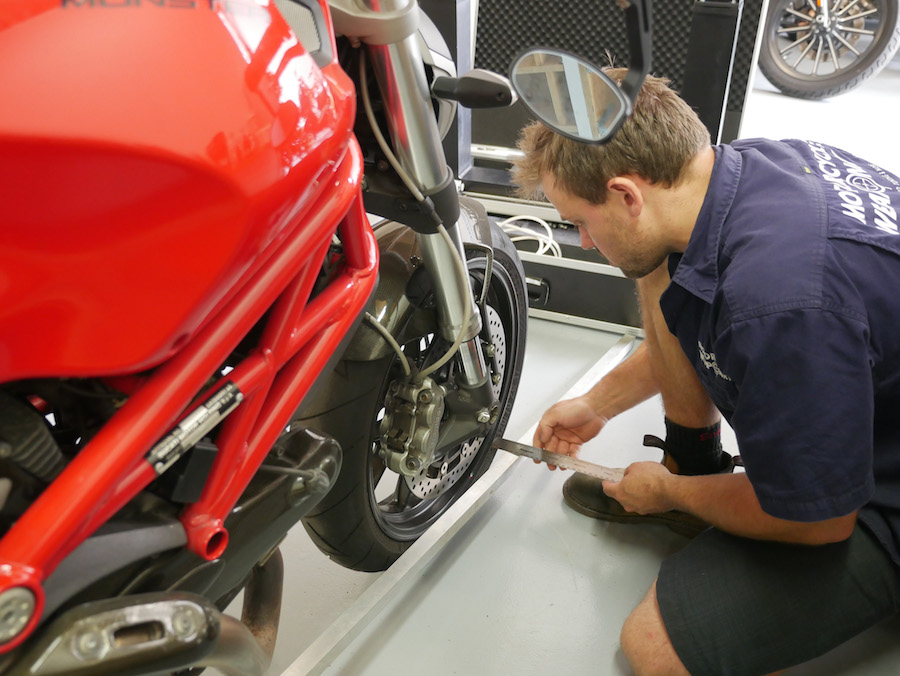
8 Using the Frame Align machine
The Frame Align machine uses a series of lasers to measure the frame accurately, and because it is measuring from the steering head, any problems with the fork or rims do not affect the outcome. It measures the frame only. It’s certainly more accurate than measuring yourself, but the cost starts at $250.

9 Complete measurement
The Frame Align machine can also check other points around the motorcycle to work out if they are true, such as the subframe. Any custom point can be measured and checked back to the central reference point of the steering head. The database also allows for any deliberate offsets.
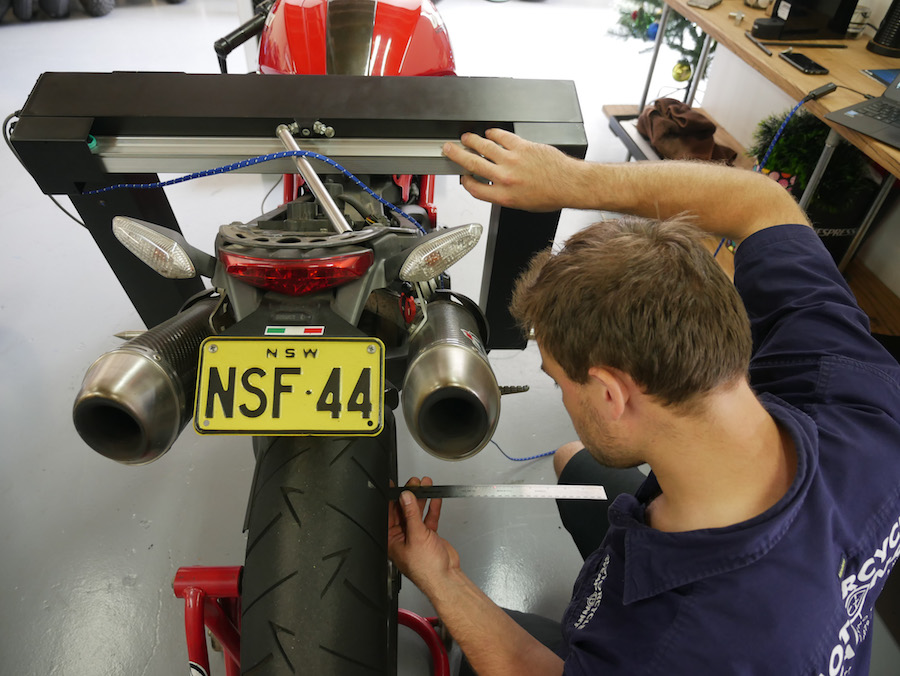
10 Certified results
The certificate from Frame Align is conclusive. If your bike has been in an accident, this piece of paper will allow you to have it re-registered. Note that the data is presented with respect to manufacturer tolerances. Frame Align is common in Europe, but not so much Down Under. It’s available at Melbourne Motorcycle Fairings (MMF), Procycles (Sydney), and there is a Sydney mobile service.
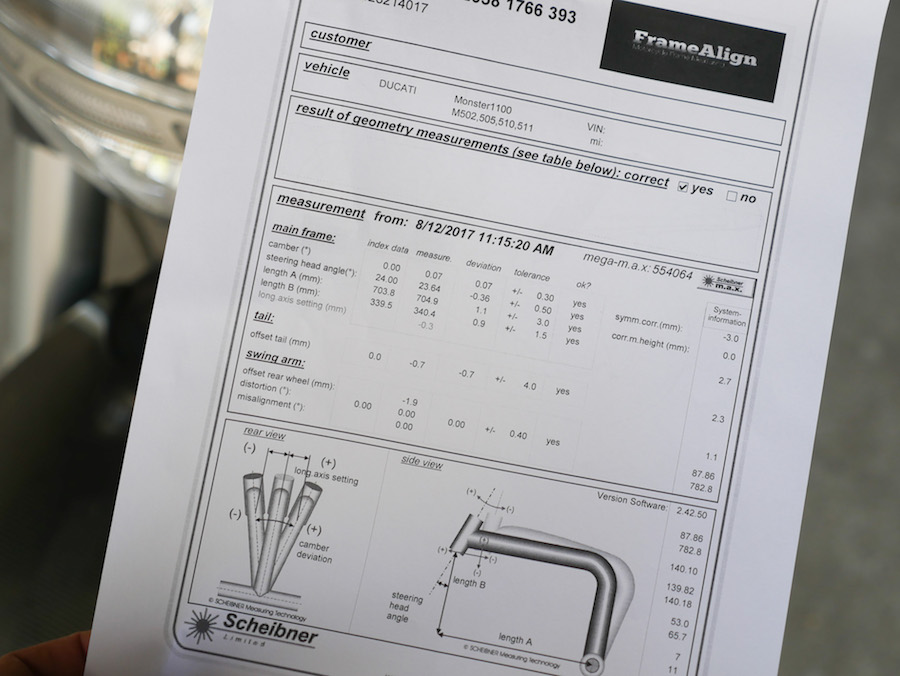
Please note
For a bike with a conventional dual-sided swingarm, measuring the frame manually will only work if the rear wheel is adjusted perfectly square in the swingarm – the rear wheel axle and swingarm pivot bolt must be perfectly parallel. Single-sided swingarms are more straightforward because the rear wheel is adjusted concentrically, and therefore is always square in the swingarm unless the swingarm itself is bent.
Some bikes, particularly those with large section rear tyres and belt drive, are designed deliberately with an offset front and rear wheel alignment. Make sure your bike isn’t one of these before getting it straightened!

WORDS & PHOTOGRAPHY MATT O’CONNELL
